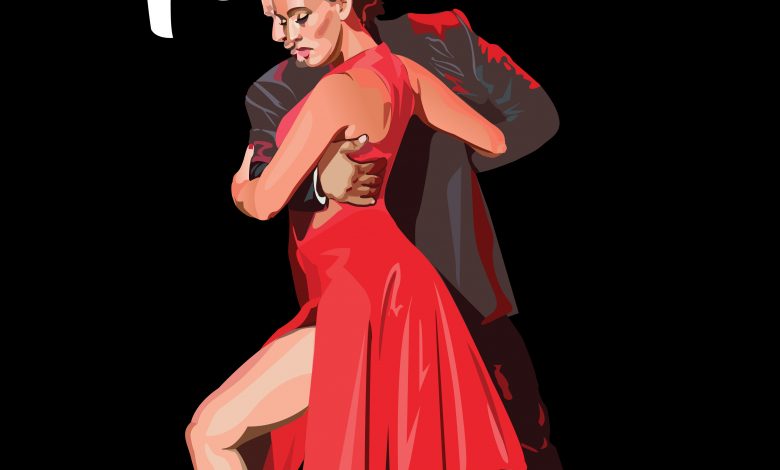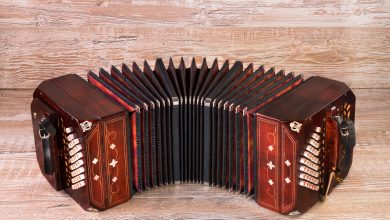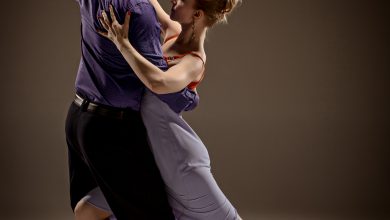Carlo Di Sarli

Carlos di Sarli
Carlos Di Sarli (January 7, 1903 – January 12, 1960) was an Argentine tango musician, orchestra leader, composer and pianist.
Nickname: El Señor del Tango (The gentleman of tango).
Background information
Birth name: Cayetano di Sarli
Date of Birth: January 7, 1903
Place of Birth: Bahía Blanca, Argentina
Died: January 12, 1960 (aged 57)
Place of Death: Olivos, Buenos Aires, Argentina
Family and Children: Unknown / None
Father: Miguel Di Sarli
Mother: Serafina Russomano
Brothers and Sisters: Domingo, Nicolas, Roque, María, José, Miguel, Antonio, Ana
Wife: Unknown / None
Children: Unknown / None
Childhood
Carlos di Sarli was born to a large, Italian, Catholic family in the city of Bahía Blanca, located in Southern Argentina. He was the 8th child of Italian immigrants Miguel Di Sarli and Serafina Russomano. Miguel owned a gunsmith store and Serafina was the daughter of the tenor singer Tito Russomano. Carlo was baptized as Cayetano di Sarli in accordance with the Catholic tradition of his parents, and only later changed his name to Carlos. Carlos came from a musical family through his mother: Carlos’ older brother Domingo taught at the Williams music conservatory in Bahía Blanca; Nicolas, another older brother, became a famous baritone singer, and Carlos’ younger brother, Roque, was a pianist. Carlos received training in classical music in the Williams music conservatory where his brother Domingo was teaching, while working in his father’s gun store.
When Carlo was 13, Carlo lost an eye in an accident while working at his father’s gun store which forced him to wear glasses for the rest of his life. After recovering from the injury, Carlo joined a group of traveling musicians, who toured the provinces of Argentina and played popular music including tangos. He soon moved to Santa Rosa in the La Pampa province where Mario Manara, a friend of his father’s who was also an Italian immigrant, owned a cinema and a club. Carlo played piano there for two years, both in the cinema accompanying silent movies and performing early tango songs at the club. After 3 years, in 1919, he returned to Bahía Blanca and established his first orchestra, playing at the Cafe Express on the corner of Zelarrayan and Buenos Aires streets, and in Cafe Moka, on O’Higgins street. It was during this year, 1919, that he composed his first tango, “Meditación” which he never recorded. but was later recorded by Jaun “Pacho Maglio and José María Rizzutti in 1927/28. Carlo’s orchestra also did tours to the provinces of La Pampa, Córdoba, Mendoza, San Juan and Salta. In 1923, at 20 years old, Carlos and his younger brother Roque moved to Buenos Aires.
Musical Career
Carlos Di Sarli’s career as a musician started from a young age given his family’s musical background and spending his adolescent years touring Argentina. However, once based in Buenos Aires, his career took off. In Buenos Aires through his relationship with Alberico Spatola, the composer of the tango El Trece and the director of the Buenos Aires police orchestra, Carlos was introduced to Anselmo Aieta and was invited to join his band. In early 1924, Carlos joined an orchestra led by the violin player Juan Pedro Castillo, and later joined the trio of Alejandro Scarpino (the composer of Canaro en Paris). He also accompanied the actress and singer Olinda Bozán on her song recordings and worked as part of a sextet in the cabaret Chantecler.
In 1926, following a recommendation from José Pécora, a violin player, he was able to join Osvaldo Fresedo’s orchestra and played at the opening night of the Fénix theater in Flores, a Buenos Aires neighborhood. Osvaldo Fresedo mentored di Sarli and had a strong influence on di Sarli’s music. They became close friends. The tango Viejo Milonguero, which di Sarli composed in 1927 or 1928 was dedicated to Fresedo.
In late 1927 he started to put together his own sextet or Orchestra Tipica with José Pécora and David Abramsky on violin, César Ginzo and Tito Landó on bandoneón and Adolfo Kraus on bass. He directed the orchestra from behind the piano that he played himself. With the orchestra, di Sarli played in clubs, on radio shows in Radio Cultura and recorded for the record label RCA Victor. He recorded with the vocalists Santiago Devincenzi (who changed his last name to Devin), Ernesto Famá and Fernando Díaz. These singers were hired only to sing the short verses (“estribillos”) during the performances and were not constant members of his orchestra, unlike the musicians. This began a prolific period in Di Sarli’s life. Between 1928 and 1931, he recorded 48 tracks including the tangos TBC by Edgardo Donato, Maldita by Antonio Rodio and Celedonio Flores, and the compositions La Guitarrita and Una Noche de Garufa by Eduardo Arolas. After this period, he did not record again until 1938. This may have been due to personal conflict.
In 1930, during a performance in the café El Germinal, di Sarli had an argument with one of the café’s owners who did not understand why he wore dark glasses on stage. Di Sarli immediately returned with his orchestra to Bahía Blanca, where they performed at the La Central club. In 1932, Antonio Rodríguez Lesende joined the orchestra as a singer. In 1934, for reasons that are unknown, di Sarli left the orchestra and moved to Rosario in Santa Fe province where he joined a small band with Juan Cambareri on bandoneón, Alberto Saikievich on violin and the singer Roberto Pieri. His old orchestra continued to play without him, later changing its name to Orquesta Novel due to their performances at the club Novelty. At the request of the orchestra’s members in 1935, di Sarli rejoined the band temporarily to replace pianist Ricardo Canataro who was ill.
In 1938, di Sarli reorganized his orchestra and in 1939 debuted in Radio El Mundo. The orchestra consisted of Roberto Guisado, Ángel Goicoechea and Adolfo Pérez on violin, Roberto Gianitelli, Domingo Sánchez and Roberto Mititieri on bandoneón and Domingo Capurro on bass. The singer was Ignacio Murillo, soon to be replaced by Roberto Rufino who was just 16 years old. In December 1939, they recorded for RCA Victor the tangos Corazón (composed by di Sarli, with Hector Marco’s lyrics) and Retirao by Carlos Posadas. He stayed with the RCA Victor record label until 1949, when he retired from tango for a while.
In 1951, di Sarli returned to the record label Music Hall until 1953 recording 84 tracks with the vocals of Mario Pomar and Oscar Serpa. From 1954 until 1958 he returned to RCA Victor, and then went to the Philips record label to record his last 14 tracks with Horacio Casares and Jorge Durán.
From 1958 to 1959 with di Sarli on the piano, the orchestra included violinists Roberto Guisado, Elvino Vardaro, A. Rouco, Szymsia Bajour, Carlos Arnaiz, Juan Schiaffino, C. González and A. Rossi; bandoneón players F. Verdi, José Libertella, Julián Plaza, A. Marcucci y D. Sánchez; A. Sciarretta on bass and singers Horacio Casares and Jorge Durán. Di Sarli, seriously ill at the time, gave his last performance on March 8, 1959, in the club Podestá de Lanús, finishing with a performance of Bahía Blanca, his own composition dedicated to the town of his birth.
Di Sarli’s vocalists
Carlos Di Sarli worked with a lot of singers during his career. Di Sarli’s singers (in chronological order) were Santiago Devin, Ernesto Famá, Fernando Díaz, Antonio Rodríguez Lesende, Roberto Arrieta, Ignacio Murillo, Roberto Rufino, Antonio Rodríguez Lesende, Agustín Volpe, Carlos Acuña, Alberto Podestá, Roberto Rufino, Alberto Podestá, Osvaldo Cabrera, Roberto Rufino, Alberto Podestá, Jorge Durán, Raúl Rosales, Alberto Podestá, Osvaldo Cordó, Oscar Serpa, Mario Pomar, Oscar Serpa, Argentino Ledesma, Rodolfo Galé, Roberto Florio, Jorge Durán, and Horacio Casares.
Di Sarli’s Orchestra Members
Juan Pedro Castillo, José Pécora, David Abramsky, César Ginzo, Tito Landó,Adolfo Kraus, Juan Cambareri, Alberto Saikievich, Roberto Guisado, Ángel Goicoechea, Adolfo Pérez, Roberto Gianitelli, Domingo Sánchez, Roberto Mititieri, Domingo Capurro, Roberto Guisado, Elvino Vardaro, A. Rouco, Szymsia Bajour, Carlos Arnaiz, Juan Schiaffino, C. González, A. Rossi; F. Verdi, José Libertella, Julián Plaza, A. Marcucci y D. Sánchez; A. Sciarretta
Di Sarli’s Mentors and Influences
As Carlos di Sarli was classically trained he was influenced by Chopin, Liszt, and Debussy. His mentor and major tango influence was Osvaldo Fresedo, to whom he dedicated “Viejo milonguero” to in 1927-1928.
Di Sarli’s musical style
Di Sarli was known for his unique musical style. He broke away from the traditional orchestra or guardia vieja of Tango and the De Caro revival Tangos that were popular at the time. In his early years, di Sarli’s music had a simple structure, but over time it matured into a more lyrical, richer, playful and more subtle style while continuing to have a clear dancing beat. It is his clean compás, or dancing beat, that has made him a favorite of beginning social tango dancers, both during his time and now, as well as the favorite of more advanced dancers. His musical style’s ability to meet the needs of the beginners and advanced made him exceptionally popular and his orchestra frequently performed at the Carnival balls of his age.
Carlos di Sarli was a talented piano player who was able to play and direct his orchestras. His recordings do not feature significant instrumental solos. The bandoneóns at times carry the melody but essentially play a rhythmical, milonguero role. Only the violins stand out, playing a short solo or a counterpoint melody. He recorded many tracks more than once over the years, often with different singers. His reputation for musical elegance got him his nickname El Señor del Tango (The gentleman of tango).
Discography / Tango Compositions:
Bahía Blanca, Minoguero Viejo, Organito de la tarde, A la gran muñeca, El Recodo, Corazon Tangueando te quiero or Cuatro vidas, Canaro en París Tango, La guitarrita Tango, Maldita Tango, Meditación Tango, Nido gaucho Tango, Otra vez carnaval Tango, T.B.C. Tango, Tristeza marina, Tango Una noche de garufa Tango, Verdemar Tango, Viviani, Nada La Comparsita Cara Sucia
Legacy
Carlos Di Sarli has had a profound legacy on Tango music. He led his own style; he was neither a follower of Roberto Firpoor Francisco Canaro nor the De Caro renewal. He had a long career, creating music starting in 1919 until the end of his life in 1960. Today his songs are often plated in Tango classes and Milngas because they have an easy, danceable rhythm that is great for beginners while being complex enough for advanced dancers to enjoy as well. His songs are considered excellent for beginner Tango students who are struggling to hear “the beat” of Tango.



